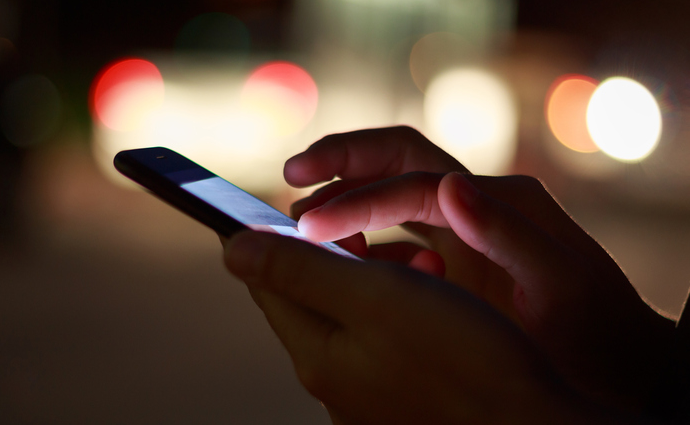Student-Based Non-Profit Secures mHealth Donations for Seniors
Founded by three Yale students and a high school sibling, Telehealth Access to Seniors has given more than 1,100 donated mHealth devices to healthcare providers to distribute to patients who lack access to telehealth services.

Source: ThinkStock
- A national non-profit launched by a quartet of high school and college students aims to increase telehealth access by giving donated mHealth devices to those who need them the most.
To date, Telehealth Access for Seniors has received and donated more than 1,100 devices to more than 75 partner clinics, ranging from community health clinics to VA facilities, in 26 states, and has spawned a network of more than 300 volunteers, many of them college-aged, taking up the cause.
The organization was launched in March when Hannah Verma, an Orlando resident and Yale senior, and her brother Arjun, a high school junior in Orlando, overheard their parents, both providers, talk about their patients with chronic conditions who were facing difficulties accessing healthcare during the height of the coronavirus pandemic because they only had flip phones.
The two then got in touch with two of Hannah’s Yale classmates, Aakshi Agarwal and Siddharth Jain, both Connecticut residents.
“Arjun had this great idea to connect them to some of his old devices and then Hannah realized we could do this at a larger scale, and reached out to me because we had worked together on a lot of community service projects together at Yale before,” Agarwal says. “We all had experience in education as well, so we wanted to bring in educational resources and work with different communities we had experiences with or knew might be particularly vulnerable due to the pandemic.”
READ MORE: MAVEN Project CEO Links Telehealth Consults to Value-Based Care
The group’s goal was to collect donated camera-enabled mHealth devices, like smartphones and tablets, and pass them on to medical practices, clinics and hospitals, who would be directed to give them to patients so that they could access providers via telehealth.
“The devices must be guaranteed to be used for tele-medicine appointments, so we can only give them for that purpose,” says Hannah Verma. “We are in contact with hospital administrators or clinic managers who have identified patients who are low-income and elderly and/or high-risk. Because medical providers know best, especially in regards to the patients’ insurance status, we do our best to fulfill their request with regards to device specifications and count, and the medical provider distributes it to the patients.”
“The devices only go to patients who cannot afford their own,” she adds.
The effort targets a persistent problem in the healthcare landscape: a significant chunk of the population who can’t access telehealth, often because they lack the technology or broadband connectivity to take advantage of virtual resources. Many of these people are part of an underserved population that could use these platforms to address neglected primary care needs, health and wellness or chronic care management.
“We hope that people will use telehealth tools and apps to potentially monitor blood pressure, blood oxygen levels, or their heart rate,” Arjun Serma says. “Allowing the device to become more than just a communication tool and instead to actively enhance the doctor’s evaluation would help improve the quality of care for patients.”
READ MORE: Telehealth Gives a Free Health Clinic a Lifeline to its Patient Population
Because of their earlier work with Department of Veteran’s Affairs facilities in Connecticut, the group has found a willing partner in VA hospitals and clinics. Some 100 devices have been sent to the VA hospital in Philadelphia, and VA facilities in Connecticut, Florida, Massachusetts, Illinois, California and Texas have also received devices.
Jain says the response from care providers has been positive, with some noting the donations can help seniors and other at-risk individuals access care from their homes rather than visit a hospital or clinic and risk infection.
The group asks that donated devices be relatively up-to-date and have working cameras, and that all personal data is erased, the SIM card is removed and the device sanitized. Devices can be donated through a link on the group’s website, or they can make donations on the group’s GoFundMe page for the purchase of new technology.
The devices come with printed guides in several languages to help users set the device, find WiFi connectivity and access e-mail and telemedicine apps. There’s also a phone number for access to 24/7 tech support, also offered in several languages.
Some companies and larger corporations have gotten in on the act as well, holding donation drives or sending in checks. Goldman Sachs, for instance, recently donated $20,000 to the effort.
The effort isn’t without its hiccups. Arjun Verma notes the group has received donations of flip phones, old Blackberries and landline phones, as well as car chargers and screen protectors, none of which can be used.
“One way that this program could function more effectively would be to make the process more automated from a donor to the clinic,” adds Jain. “Currently, a donor fills out a form indicating they have a device to donate. They reset and sanitize their device and a volunteer near them collects it. Once all the devices are together, they are dropped off at a clinic. A smoother approach would be to automatically generate a shipping label to the nearest clinic in need once a donor fills out our form. This would allow us to help elderly and low-income patients in the communities where we don’t have volunteers.”
